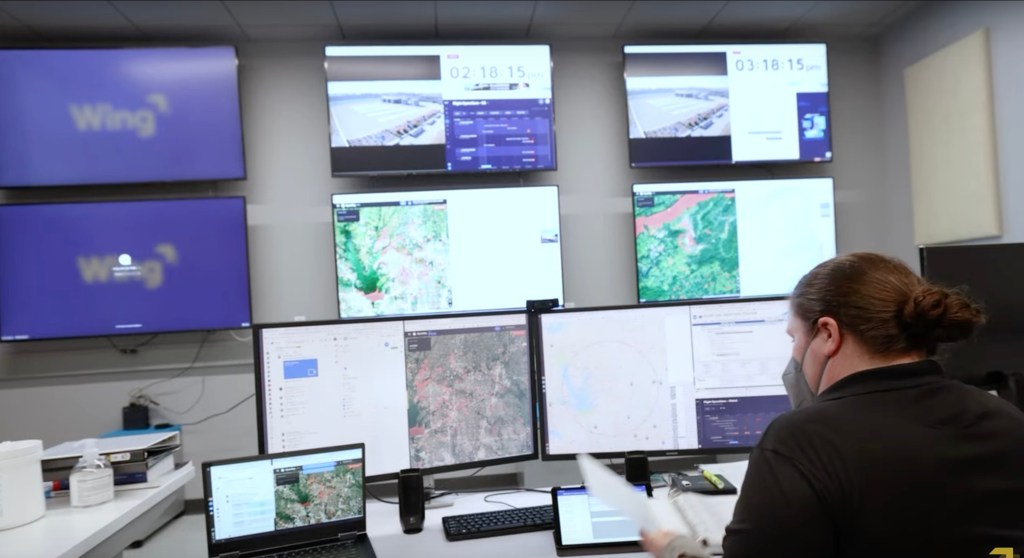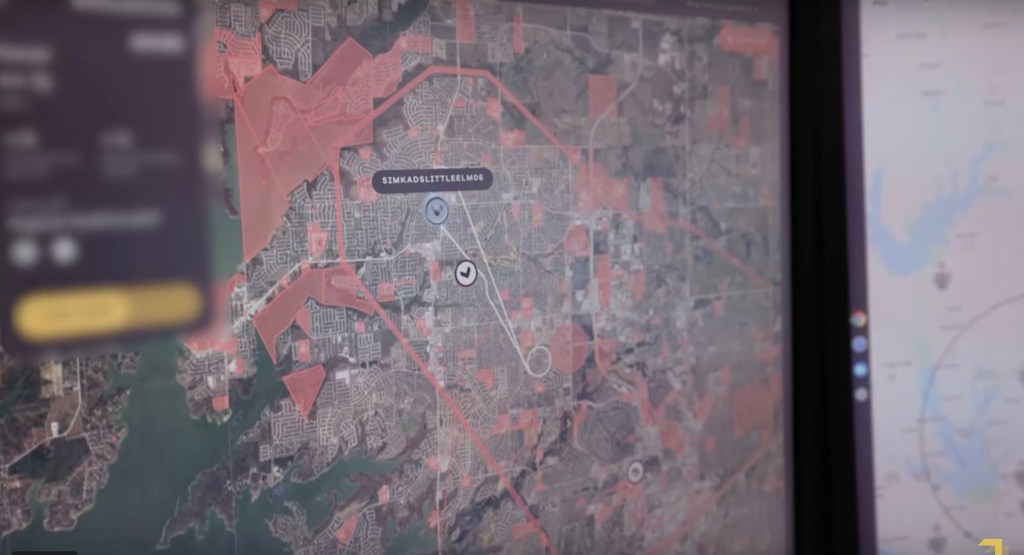
Alphabet-owned drone delivery company Wing is lifting the veil on how it gets orders from retail and food company partners to clients faster than ground transport options with a peek into how its cutting-edge remote control centers function.
The main takeaway from that may not come as a shocker to savvy DroneDJ readers, but will probably update the general public’s mental images of what that sort of aerial operation involves. Contrary to past UAV activities, Wing delivery drones aren’t being piloted by a corresponding number of people standing around with their thumbs on controller sticks, but are instead monitored in centralized centers as they autonomously carry out their missions.
Moreover, flight observers in Wing’s two US oversight facilities keep watch on drones on delivery runs anywhere across the US, as craft feed flight data into the central control system.
Read: Wing drone deliveries of DoorDash food orders launch in Australia
Those Wing control centers in Palo Alto and Dallas-Fort Worth are opened each day by one of their Pilots in Command (PIC), who put delivery drones through a series of checks so they’re ready when partnering companies begin work and start sending orders through. Once that happens and items are loaded into payload containers, and humans step back and keep an eye on the UAVs as they go about their business all by their lonesome.
For the most part, it then becomes a watch-and-verify job that ends when the last drone on one Wing PIC’s shift touches down, and oversight duties are handed off to the incoming PIC – who may well be in an entirely different state.
So what do Wing PICs do other than just watch automated drones delivery stuff as designed? For starters, even as they follow the progress of working UAVs, they also monitor weather, surrounding air traffic, and other factors that might require intervention and the altering of flights. They also keep watch of the overall health of the system, and respond to any alerts it might generate.

Once Wing delivery drones have returned and landed at base sites, the PICs use monitors to verify they’re correctly located on recharging panels, and order support operators in service areas to reposition the UAVs so they’ll be fully juiced when the next order comes across.

Read: Wing to launch store-based drone delivery in Dallas-Fort Worth
Wing’s head of flight operations, Mark Blanks, says the company decided to open the doors on its remote command centers to give sector stakeholders and the public a better idea of what kinds of systems, tech, and new jobs will be involved as drone delivery and other aerial services take off across the US and world.
“We’re just getting started with this new operating model, and it will take time for it to expand across the industry,” Blanks wrote in a blog post. “With the technology that we’ve built, we can leverage the talent of a human operator to manage ever greater areas of responsibility. As drone delivery grows, I believe we’ll need more Remote Operations Facilities like these, and that’s going to create some interesting new career opportunities for all types of aviation enthusiasts.”
FTC: We use income earning auto affiliate links. More.



Comments